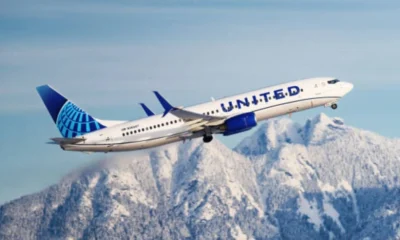General
Pair of Cymbals on a Drum Set: Exploring Techniques for Dynamic Drumming

Getting started with the role of paired cymbals in a drum kit
A drum kit’s rhythm often finds its pulse in the interaction of its cymbal pair. These shiny, metallic discs are more than just eye-catching accessories; pair of cymbals on a drum set play a critical role in shaping the sound and dynamics of your drumming. Whether you’re jamming with friends or performing on stage, mastering the art of using a pair of cymbals can elevate your musical expression to new heights. From crisp accents to explosive crashes, these instruments offer an array of techniques that can transform your rhythm patterns. Let’s dive into the world of cymbals and explore how they contribute to creating dynamic and captivating music!
What are Cymbals and Why are They Important in Drumming?
No drum kit feels complete without cymbals, as they shape the soundscape with added dimension and color.Made from metal alloys, they produce bright, resonant sounds that enhance rhythm and melody.
Their importance in drumming cannot be overstated. Cymbals provide accents that can elevate simple beats into complex rhythms. They create dynamic contrasts within musical pieces, offering both power and subtlety.
When struck, cymbals can resonate in various ways—producing everything from crisp highs to warm lows. This versatility allows drummers to express emotion through their playing.
Furthermore, the visual appeal of cymbals adds an aesthetic element to performances. Their shiny surfaces catch the light on stage, making them as captivating visually as they are sonically.
In essence, without cymbals, many genres would lack depth and character.
Types of Cymbals Used in a Drum Set
Cymbals are diverse and each type brings its unique flavor to a drum set. The most common cymbals include the ride, crash, and hi-hats.
Ride cymbals offer a steady, clear sound that complements various musical styles. They’re perfect for keeping time during complex rhythms.
Crash cymbals add excitement and punctuation to your drumming. Their explosive sound is essential for dynamic transitions in songs.
Hi-hat cymbals can produce intricate patterns due to their closed and open positions. They often create the heartbeat of many genres, from rock to jazz.
Splash cymbals deliver quick bursts of sound, ideal for accents or fills. For more extended effects, consider using a china cymbal; its unique tone adds drama to any performance.
Each type serves a distinct purpose in shaping your overall sound palette on stage or in the studio. Understanding these differences enhances your playing experience significantly.
Techniques for Playing Pair of Cymbals on a drum set – Striking, Swelling, Choking
Striking a pair of cymbals on a drum set creates an immediate impact. Use the tips of your sticks for crisp, clear sounds. Experiment with different angles to find the sweet spot that resonates best.
Swelling adds depth and drama. Gradually build up your force as you play, letting each hit grow in volume before fading away. This technique can transform simple rhythms into captivating crescendos that keep listeners engaged.
Choking involves stopping the sustain of the cymbal quickly after striking it. To achieve this, press down lightly on the cymbal with one hand while hitting it with the other. The abrupt cut-off offers a sharp contrast to smooth rolls or fills, making it an effective tool for dynamic shifts in music.
Explore these techniques to expand your arsenal and elevate your drumming style effortlessly.
Utilizing Cymbals for Dynamic Range in Drumming
They enrich drumming by layering in extra tones, giving the music more depth and character. Their unique sound can transform a simple rhythm into an intricate musical statement.
When utilizing cymbals, focus on varying your strike intensity. A gentle tap produces a soft, shimmering effect, while a strong hit delivers an explosive crash that commands attention. This contrast creates dynamic shifts within your performance.
Experiment with different placements around the drum set. Positioning them at various angles allows you to explore their tonal range fully. When playing fills or transitions, incorporating subtle cymbal accents can enhance the overall flow of your piece.
Don’t forget about layering sounds! Mixing multiple types of cymbals in one phrase adds richness and complexity to your drumming style. Embrace creativity by interspersing techniques like swells or chokes for dramatic impact during key moments in songs.
Different Styles of Music and How to Use Cymbals Effectively
Different genres of music call for unique approaches to playing a pair of cymbals on a drum set.
In rock, crash cymbals provide explosive accents that enhance the energy. A well-timed hit can elevate a chorus or create an impactful transition between sections.
Jazz drummers often use ride cymbals to keep time with subtlety. The shimmering sound adds texture without overpowering other instruments, allowing for intricate improvisation.
In heavier styles like metal, china cymbals deliver a fierce, cutting edge that amplifies intensity. Their cutting tones punctuate rhythms, adding intensity to fast-paced drumming patterns.
In funk and R&B, hi-hats are essential. Playing them tightly closed during grooves offers crisp articulation while opening up creates dynamic shifts that keep listeners engaged.
Each style demands different techniques and sensitivities with your pair of cymbals on a drum set. Knowing when to strike hard or softly is key in making your performance resonate within the genre’s framework.
Top Tips for Maintaining and Care of Cymbals
Cymbals are a crucial part of your drum set, and taking care of them is essential for sound quality. Start by cleaning them regularly. Use a soft cloth to wipe off fingerprints and dust after each session. This simple habit can prevent buildup that dulls their shine.
Avoid using harsh chemicals or abrasive materials when cleaning, as they can damage the surface. Instead, consider specialized cymbal cleaners designed specifically for this purpose.
Store your cymbals properly when not in use. Keep them in a padded case or bag to protect against scratches and dents during transport.
Be mindful of how you handle them. Always hold cymbals by the edges rather than the playing surface to avoid unwanted marks that could affect sound production later on.
Monitor their condition closely look out for cracks or chips which might require professional repair or replacement to maintain optimum performance during practice and performances.
Conclusion
Understanding the role of a pair of cymbals on a drum set opens up endless possibilities for expression and creativity. These versatile instruments not only add texture to musical compositions but also enhance the overall dynamic range of your performance. With various types available, from hi-hats to crash and ride cymbals, each offers unique tonal qualities that can elevate any genre.
Mastering techniques such as striking, swelling, and choking allows drummers to manipulate sound effectively. This flexibility lets you experiment with different styles while maintaining control over your dynamics. Whether you’re playing rock, jazz, or funk, knowing how to use your cymbals can significantly impact the energy of your music.
Moreover, taking proper care of your cymbals will ensure they remain in top condition for years. Regular maintenance practices help preserve their sound quality and appearance while prolonging their lifespan.
Embrace the power that lies within a well-chosen pair of cymbals on a drum set. By experimenting with different techniques and styles, you’ll unlock new dimensions in your drumming journey that resonate deeply with both you and your audience.
General
Renee Youtslur Wilkins: Life and Legacy Behind Shaggy 2 Dope

Introduction to Renee Youtslur Wilkins and her connection to Shaggy 2 Dope
Renee Youtslur Wilkins is a name that might not ring a bell for everyone, but her impact on the music industry, particularly in the world of hip-hop and underground culture, is undeniable. As the life partner of Shaggy 2 Dope from Insane Clown Posse, Renee’s story intertwines with one of the most iconic figures in alternative rap. Her journey through love, creativity, and community has left an indelible mark on fans and fellow artists alike. Discover how this remarkable woman played a crucial role in shaping not just Shaggy’s career but also the vibrant legacy of one of music’s most unconventional movements.
Early Life and Influences on Renee
Renee Youtslur Wilkins was born in a small town, surrounded by the vibrant sounds of music. Growing up, she absorbed various genres that shaped her artistic sensibilities. Her family often held weekend gatherings filled with live performances and jam sessions.
These early experiences ignited a passion for creativity within her. Renee found herself drawn to powerful lyrics and innovative rhythms, which later influenced her work alongside Shaggy 2 Dope.
She faced challenges during her formative years but used those struggles as fuel for self-expression. Art became an escape route through life’s ups and downs, allowing Renee to cultivate resilience.
Influenced by local artists and musicians, she developed a unique perspective on storytelling in music. This foundation laid the groundwork for an extraordinary journey ahead setting the stage for collaboration with iconic figures like Shaggy 2 Dope in the world of hip-hop.
Meeting Shaggy 2 Dope and their Relationship
Renee Youtslur Wilkins first crossed paths with Shaggy 2 Dope during a local music event in Detroit. The energy was electric, and the two were drawn to each other almost immediately. Their shared love for alternative music and performance art became the foundation of their connection.
As they spent time together, their bond deepened. Renee admired Shaggy’s passion for his craft, while he appreciated her unwavering support and creativity. They often collaborated on various projects, blending their unique styles.
Their relationship wasn’t just personal; it flourished creatively as well. Together, they pushed boundaries within the underground music scene. This synergy would later contribute to the dynamic identity of Insane Clown Posse.
Through laughter and challenges alike, Renee stood by Shaggy’s side as both a confidante and collaborator in an ever-evolving landscape of sound and expression.
Renee’s Role in the Success of Insane Clown Posse
Renee Youtslur Wilkins played a pivotal role in shaping the trajectory of Insane Clown Posse. Her influence extended far beyond just personal connections; she was a creative force within the group.
From early brainstorming sessions to hands-on involvement in their music videos, her artistic vision helped define their unique aesthetic. Renee’s knack for understanding fan culture translated into marketing strategies that resonated deeply with the Juggalos.
She also served as a mediator during conflicts, ensuring harmony within the team and fostering collaboration. It was this behind-the-scenes dedication that laid the groundwork for their explosive success.
Renee’s impact is evident in every aspect of ICP’s evolution—from lyric development to live performances. Her contributions have left an indelible mark on their legacy, solidifying her place alongside them in music history.
Controversies Surrounding Renee and Shaggy 2 Dope
Renee Youtslur Wilkins and Shaggy 2 Dope have not been strangers to controversy throughout their careers. The duo’s vibrant personalities often sparked discussions that transcended mere fandom.
Rumors of tumultuous moments between them circulated frequently. Some speculated about the dynamics of their partnership, questioning how personal relationships intertwined with professional ambitions.
Media coverage sometimes painted a distorted picture, sensationalizing conflicts for clicks. This left fans divided on where to place blame or support.
Yet through it all, both Renee and Shaggy maintained a firm commitment to their artistry. They faced scrutiny head-on, using it as fuel rather than letting it hinder their progress.
Despite external noise, they focused on building an empire rooted in creativity and expression. Their connection evolved amidst challenges, showcasing resilience in the face of adversity within the music scene.
Legacy and Impact on the Music Industry
Renee Youtslur Wilkins has left an indelible mark on the music industry, particularly through her work with Shaggy 2 Dope. Her unique vision and creative input shaped the sound of Insane Clown Posse, making it a cultural phenomenon.
Wilkins’ contributions extended beyond production; she helped craft the group’s identity. The blend of horrorcore and humor that characterized their style owes much to her influence. She pushed boundaries, challenging norms within the genre.
Her legacy is evident in how new artists draw inspiration from ICP’s bold approach to music and performance art. Today’s underground scene often echoes themes pioneered by this dynamic duo.
Moreover, Renee’s story exemplifies resilience in an industry frequently dominated by men. She carved out a space for herself and other women, fostering a spirit of inclusivity that continues to inspire many aspiring musicians today.
Conclusion
Renee Youtslur Wilkins remains a pivotal figure in the story of Shaggy 2 Dope and Insane Clown Posse. Her influence spans beyond her early life experiences to the lasting bonds she formed with those around her. The unique relationship between Renee and Shaggy 2 Dope showcases how personal connections can drive creative success.
As a vital part of the Insane Clown Posse’s journey, Renee helped shape their identity within the music industry. Through various challenges, both professional and personal, she maintained a presence that resonated with fans and contributed to their legacy.
While controversies may have surrounded them over time, they only served to highlight the complexity of their lives and careers. Today, Renee’s impact continues as new generations discover her story alongside that of Shaggy 2 Dope.
Her legacy is etched into both history and hearts alike an enduring testament to resilience, creativity, and friendship in an ever-evolving musical landscape.
General
Panantukan DVDs: Master Filipino Dirty Boxing at Home

Are you looking to add a unique skill to your martial arts repertoire? Ever heard of Panantukan? This intriguing and effective form of Filipino dirty boxing combines striking techniques with fluid movement, offering both self-defense skills and physical fitness. With the rise in popularity of martial arts training at home, many enthusiasts are turning to Panantukan DVDs as a way to dive into this captivating discipline from the comfort of their living rooms. Whether you’re a seasoned fighter or just starting out, mastering these techniques can enhance your abilities and empower you on multiple levels. Let’s explore what makes Panantukan so special and how you can start learning today!
What is Panantukan?
Panantukan, also known as “dirty boxing,” is a Filipino martial art focused on striking techniques. It focuses on close-range combat and emphasizes quick, powerful strikes using fists, elbows, knees, and even headbutts.
What sets Panantukan dvds apart is its adaptability. Practitioners learn to integrate various techniques seamlessly into their movements. This allows for fluid transitions between offensive and defensive actions.
The beauty of Panantukan lies in its practicality. It’s not just about punches; it teaches fighters how to use their bodies effectively in real-world scenarios. Whether you’re defending against an attacker or countering an opponent’s moves in sport fighting, these skills are invaluable.
Additionally, Panantukan incorporates elements of footwork and movement that enhance agility and balance. This makes it suitable for all fitness levels while providing an engaging way to develop coordination and strength through practice.
The History and Origins of Panantukan
Panantukan, often referred to as Filipino Dirty Boxing, has deep roots in the rich tapestry of Filipino martial arts. It emerged from a necessity for self-defense during a time when confrontations were common.
The practice blends various influences, including indigenous fighting styles and elements borrowed from Western boxing. This fusion created a unique set of techniques that prioritize efficiency and practicality.
Historically, Panantukan was not just about striking; it integrated grappling and trapping techniques too. Practitioners learned to use their surroundings effectively—making this art form both adaptive and versatile.
As the Spanish colonized the Philippines, local fighters began to incorporate these skills into guerrilla tactics against oppressors. Through generations, Panantukan evolved with each practitioner adding their flair while preserving its core principles. Today, its legacy continues through dedicated students eager to master this dynamic fighting style at home or in training halls worldwide.
Benefits of Learning Panantukan
Learning Panantukan offers a multitude of benefits that extend beyond just self-defense. This unique Filipino martial art emphasizes practical techniques, making it incredibly effective in real-world situations.
One major advantage is its adaptability. Practitioners can seamlessly incorporate Panantukan into their existing training regimens, enhancing their overall skill set.
Moreover, the focus on striking and clinching builds confidence and improves physical fitness. It engages different muscle groups while also boosting cardiovascular endurance.
Mental discipline plays a key role too. As students master the intricacies of movement and timing, they develop sharper reflexes and better situational awareness.
Additionally, learning Panantukan fosters a sense of community among practitioners. Engaging with others who share similar interests creates lasting friendships and support networks that extend beyond the dojo or gym environment.
The Importance of Proper Technique in Panantukan
Proper technique is crucial in Panantukan, as it defines the effectiveness of your strikes and defenses. Mastering the fundamentals ensures that you can deliver powerful blows while minimizing risk to yourself.
When practicing dirty boxing techniques, precision plays a vital role. It enhances accuracy and control during high-pressure situations. A well-executed technique not only maximizes impact but also reduces the chance of injury.
Moreover, understanding body mechanics aids in developing fluid movement. This allows practitioners to seamlessly transition between offensive and defensive tactics. The right technique fosters confidence, making each encounter feel more manageable.
Training with an emphasis on proper form leads to muscle memory development. This means you’ll instinctively react correctly when faced with real-life scenarios. Embracing good habits from the start sets a strong foundation for future growth in your Panantukan journey.
Overview of the Panantukan DVDs
The Panantukan DVDs offer a unique way to explore the art of Filipino dirty boxing from home. Designed for all skill levels, these instructional videos break down techniques into manageable segments.
Each DVD features expert instructors who guide you through basic to advanced maneuvers. You’ll learn striking methods, clinch work, and defensive tactics that can be seamlessly integrated into your training regimen.
What sets these DVDs apart is their focus on real-world application. Techniques are presented with an emphasis on practicality and adaptability in various combat situations.
Visual demonstrations enhance understanding, making it easier to grasp complex movements. The structured format allows you to progress at your own pace while reinforcing proper technique along the way.
With clear explanations and engaging content, mastering Panantukan has never been more accessible. Whether you’re a beginner or looking to refine your skills, these DVDs serve as an invaluable resource for any martial arts enthusiast.
Step-by-Step Guide to Mastering Filipino Dirty Boxing at Home
To master Panantukan at home, start by creating a dedicated training space. A clear area allows you to move freely and focus on your techniques without distractions.
Begin with the basics. Familiarize yourself with footwork drills that emphasize agility and balance. Practicing movement will enhance your ability to strike effectively.
Next, work on the fundamental strikes: punches, elbows, knees, and open-hand techniques. Use a mirror or video recordings to monitor your form as you practice these essential skills.
Incorporate shadow boxing into your routine. This helps develop combinations while improving speed and fluidity in movements.
As you progress, add partner drills if possible. Find someone willing to train with you for practicing counter-attacks and defensive maneuvers.
Invest time in conditioning exercises specific to combat sports. Building strength and stamina is crucial for executing techniques efficiently during sparring sessions or competitions.
Conclusion
Panantukan DVDs offer a unique opportunity for martial arts enthusiasts to delve into the world of Filipino Dirty Boxing from the comfort of their homes. This traditional fighting style not only enhances your self-defense skills but also provides a thorough workout that engages both body and mind.
By understanding the rich history and origins of Panantukan, you’ll appreciate its significance in Filipino culture and how it has evolved over time. The benefits are plentiful, including improved coordination, heightened awareness, and confidence in confrontational situations.
Mastering proper technique is crucial in any combat sport; Panantukan is no exception. With dedicated practice using these DVDs, you can refine your skills effectively while avoiding common pitfalls associated with self-taught approaches.
The step-by-step guidance found within each DVD ensures that learners at all levels can grasp the fundamentals before progressing to more advanced techniques. Whether you’re looking to improve your fighting ability or simply want an engaging way to stay fit, these resources cater to everyone.
Exploring Panantukan through these instructional videos not only enriches your training regimen but opens doors to a deeper appreciation for this incredible martial art form.
General
Soutaipasu: Origins, Uses, and Cultural Culinary Value

Introduction to Soutaipasu
Soutaipasu is more than just a dish; it’s a vibrant tapestry woven into the culinary fabric of its culture. With roots that stretch deep into history, this unique ingredient has captured the hearts and palates of many around the globe. Whether you’re a seasoned chef or an adventurous home cook, understanding soutaipasu can unlock new flavors and experiences in your kitchen.
In this exploration, we’ll delve into its origins, cultural significance, and how it’s traditionally prepared. Plus, you’ll discover modern twists on classic recipes that bring soutaipasu to life in exciting ways. Get ready to expand your culinary horizons as we uncover what makes soutaipasu truly special!
The History and Origins of Soutaipasu
Soutaipasu has roots deeply intertwined with the culinary traditions of Southeast Asia. Believed to have originated in the lush landscapes of Thailand, it was initially a humble dish made by local farmers.
As trade routes expanded, so did its popularity. The unique blend of flavors attracted attention from neighboring countries. This led to variations that incorporated regional ingredients and spices.
Historically, soutaipasu served as both sustenance and a symbol of community gatherings. Families would prepare it during festivals or special occasions, celebrating not only food but also togetherness.
With time, this dish evolved into various forms while retaining its essence. Its journey reflects the rich cultural tapestry of the region where it first emerged. Each bite tells a story steeped in tradition and shared heritage.
Cultural Significance and Culinary Uses of Soutaipasu
Soutaipasu holds a special place in the culinary traditions of various cultures, particularly in regions where it has been grown for generations. Its rich flavor and unique texture make it a beloved ingredient in traditional dishes, often elevating simple meals to extraordinary experiences.
In many communities, soutaipasu is not just food; it’s part of cultural rituals and celebrations. Families gather around tables adorned with this versatile ingredient during festivals, reflecting their heritage and fostering connections.
Chefs appreciate its adaptability. Soutaipasu can be roasted, grilled, or incorporated into stews and sauces. The subtle earthy notes enhance both savory dishes and sweet desserts alike.
Moreover, its presence on menus signifies authenticity. Restaurants that feature soutaipasu showcase their commitment to preserving culinary traditions while introducing diners to the diverse flavors of global cuisine.
Traditional Preparation Methods
Traditional preparation methods for soutaipasu are deeply rooted in various cultural practices. At its core, the process begins with selecting high-quality ingredients. Fresh vegetables, grains, and spices play a vital role.
Cooking often involves slow simmering to enhance flavors. This technique allows the rich tastes to meld beautifully over time. Firewood or charcoal may be used for an authentic smoky flavor that adds depth.
Some recipes incorporate unique fermentation processes, which not only preserve but also elevate the dish’s character. The natural tang from fermented components brings a delightful complexity.
Moreover, communal cooking is common when preparing soutaipasu. Families gather around large pots, sharing stories while stirring together fragrant concoctions an experience that strengthens bonds and traditions alike. Each region boasts its own variations of these methods, reflecting local resources and customs seamlessly into every bite.
Modern Adaptations and Fusion Recipes
Soutaipasu is no longer confined to traditional dishes. Chefs around the globe are experimenting with this ingredient, blending it into modern culinary creations.
One popular adaptation incorporates soutaipasu into gourmet salads. The subtle flavor enhances fresh greens and adds a unique twist that elevates any salad experience.
Another exciting fusion recipe features soutaipasu-infused pasta dishes. Imagine creamy sauces with hints of nuttiness it’s a delightful surprise for your taste buds.
Street food vendors have also embraced soutaipasu, crafting delicious tacos or wraps that fuse local flavors with this versatile ingredient. It’s become a trendy option among foodies seeking something different.
Desserts aren’t left out either! Innovative bakers incorporate ground soutaipasu in cookies and cakes, creating an unexpected yet mouthwatering treat that keeps patrons coming back for more.
Health Benefits of Soutaipasu
Soutaipasu is not just a flavorful addition to your meals; it also packs several health benefits. Rich in essential nutrients, this ingredient can help boost your immune system and promote overall wellness.
One of the standout features of soutaipasu is its high antioxidant content. Antioxidants play a crucial role in combating free radicals, potentially reducing the risk of chronic diseases.
Additionally, soutaipasu contains anti-inflammatory properties that may aid in digestion and reduce bloating. This can be particularly beneficial for those with sensitive stomachs or digestive disorders.
Packed with vitamins and minerals, including iron and calcium, soutaipasu supports bone health and energy levels. Including it in your diet might enhance nutrient absorption as well.
For anyone looking to improve their dietary habits while enjoying unique flavors, soutaipasu offers both taste and nutrition without compromise.
Where to Find and Try Soutaipasu
If you’re eager to try soutaipasu, start by exploring local Asian markets. Many specialty stores carry the ingredients needed for this delightful dish. Freshness is key, so look for vendors that pride themselves on quality.
Restaurants offering authentic regional cuisines are another great option. Seek out eateries known for their diverse menus or those specializing in lesser-known dishes. Don’t hesitate to ask the staff about their take on soutaipasu; they might share a unique family recipe.
Food festivals and cultural events often showcase traditional foods like soutaipasu. These gatherings provide an excellent opportunity to taste various preparations while enjoying vibrant community atmospheres.
Consider joining cooking classes focused on international cuisine. Learning hands-on can deepen your appreciation and understanding of how to prepare souatpaisu authentically at home!
Conclusion
Soutaipasu is more than just a culinary delight; it embodies the rich tapestry of culture and tradition from which it originates. Its unique flavors and textures have captivated taste buds for generations, making it a staple in various cuisines. The history of soutaipasu speaks to its enduring legacy, rooted deeply in the customs and practices of communities.
As people explore traditional preparation methods alongside modern adaptations, soutaipasu’s continues to evolve while honoring its heritage. Fusion recipes are breathing new life into this cherished dish, inviting everyone to experience its versatility in exciting ways.
Furthermore, with health benefits that contribute positively to well-being, incorporating soutaipasu’s into your diet can be both delicious and nutritious. Whether you’re seeking authenticity or innovative takes on classic recipes, there’s something for everyone when it comes to enjoying this beloved food.
For those eager to try soutaipasu’s firsthand or find new inspirations at home, local markets and restaurants offer an array of options showcasing this remarkable ingredient. With each bite, you’re not just tasting food; you’re experiencing a piece of culture that has thrived through time. Embrace the journey that souatipas brings it’s one worth savoring.
-

 Sports4 months ago
Sports4 months agoTennessee Titans vs Texans Match Player Stats: Game Analysis & Top Performers
-

 Tech5 months ago
Tech5 months agoQuikconsole Com: Revolutionizing Web-Based Server Management for Devs and Sysadmins
-

 General4 months ago
General4 months agoUnited Airlines Flight UA770 Emergency Diversion Explained
-

 Business4 months ago
Business4 months agomyfastbroker .com Guide: Find Trusted Brokers for Smart Trading
-

 General4 months ago
General4 months agoSimbramento: Ancient Art of Mindfulness, Movement, and Flow
-

 Business4 months ago
Business4 months agoCrypto 30x .com Guide: High-Leverage Trading Risks & Insights
-

 Tech5 months ago
Tech5 months ago001-gdl1ghbstssxzv3os4rfaa-3687053746: A Deep Dive into Encrypted Multi-Layer Identifiers for Modern Systems
-

 Entertainment4 months ago
Entertainment4 months agoهنتاوي.com: Gateway to Arabic Content and Tech Evolution



